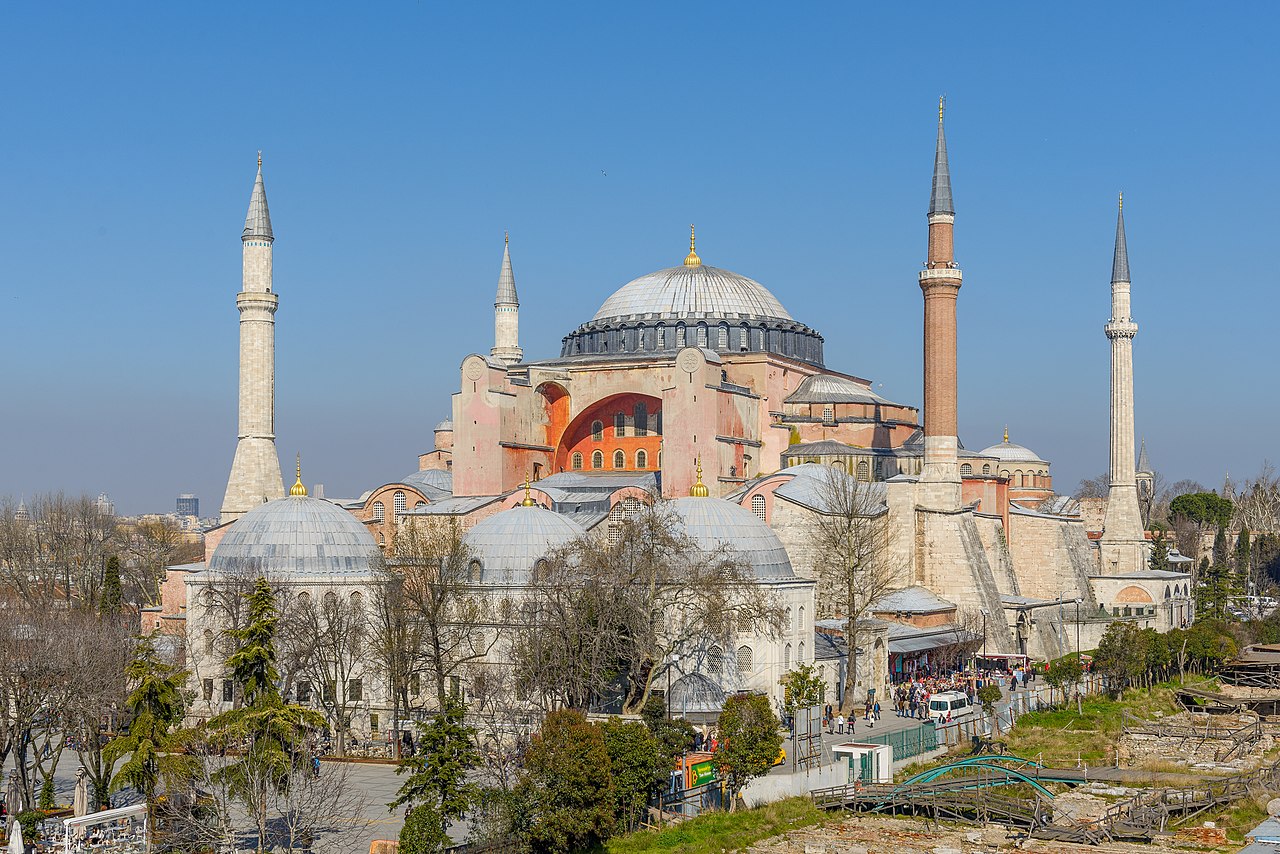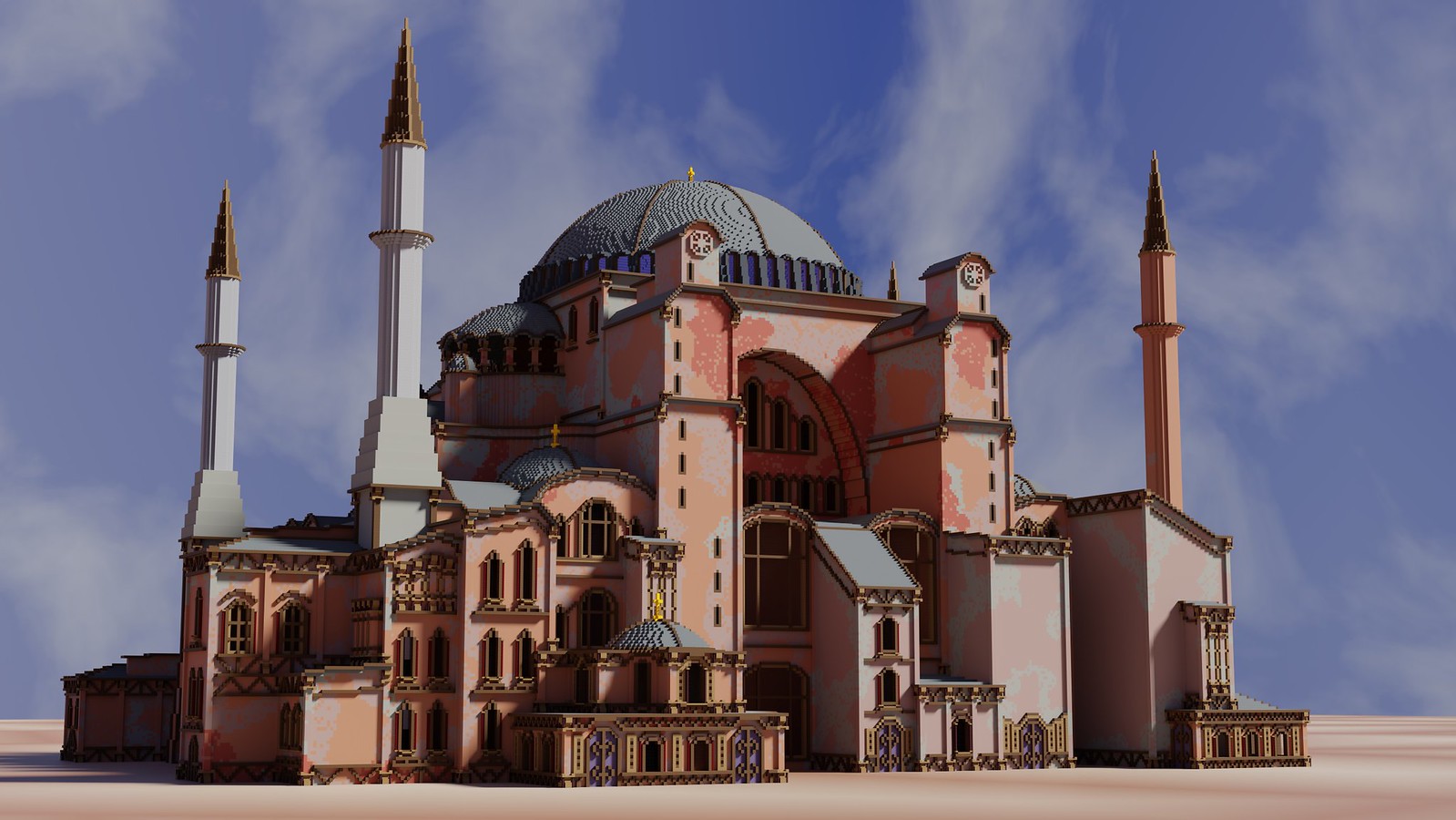History
Quick Facts
Location: Istanbul, Turkey
Architect: Isidore of Miletus, Anthemius of Tralles
Date Built: 1882-1912
Length: 82m
Width: 73m
Height: 55m
What Society Built it: Byzantine (Eastern Roman) Empire
Why it was Built: To replace the old Hagia Sophia, which was burnt down in the Nika Riots

What it Is
The Hagia Sophia is a must-see for all travelling to Turkey. Towering over the Bosporus and the Europe-Asia border, the 1500-year old cathedral-mosque-museum has seen empires rise and fall around it. It is built in a style that has come to define Byzantine and Ottoman architecture, serving as an Eastern Orthodox cathedral under the Byzantine Empire, as a mosque under the Ottoman Empire, and a museum (recently reconverted to a mosque) under the secular Republic of Turkey. Gilded with Roman mosaics and adorned with Islamic symbols, it represents a journey through its long history and the intermixing of the cultures that contributed to its construction and development. Throughout the ages, it has been damaged, reconstructed, and redesigned by a diverse set of peoples and religions, most notably the addition of the four iconic minarets by the Ottoman sultans. It has been a UNESCO World Heritage Site since 1985.
Solomon, I have surpassed thee
Those were the words of Emperor Justinian I upon seeing his masterpiece for the first time. In 532, he was in the tumultuous early years of his illustrious reign. Considered illegitimate by many and having appointed talented yet unpopular and corrupt tax and legal officials, and fighting unsuccessful wars abroad, the city exploded into riots against his reign. For five days, the royal palace was under siege, and fires engulfed the city, burning down Theodosius II's Sancta Sophia. Upon quelling the riots by butchering tens of thousands of rioters in the Hippodrome, Justinian cemented his reign by building an entirely different, more majestic basilica. Designed by geometers Isidore of Miletus and Anthemius of Tralles, the new Hagia Sophia was built in just under six years, adorned with treasures from around the world. For the next nearly thousand years, it was an icon of Constantinople and the beating heart of Eastern Orthodoxy, becoming the archetype for Orthodox church form. It survived many of the Empires greatest trials, from Iconoclasm to the Sack of Constantinople during the Fourth Crusade to the Fall of the Byzantine Empire in 1453. Following Ottoman Sultan Mehmed II's conquest of the Byzantines, it was almost immediately converted into a mosque instead of being sacked and destroyed, like much of the rest of the city. Over time, the four minarets were built and the interior refurbished with Islamic art and symbols. It served as an imperial mosque for nearly another five centuries, becoming archetypal of Ottoman architecture, before the abolition of the Sultanate and the establishment of modern Turkey, a secular republic which converted the mosque into a museum honoring both religions and the many cultures that made it beautiful. In recent times, due to the need to gain political advantage, the government of Turkey has reconverted it into a mosque.
Facts
An earthquake caused the partial collapse of the dome in 558, and smaller collapses occurred later. Due to the Hagia Sophia's significant symbolic and cultural value, it was restored, even by a declining Byzantine Empire.
The beginning of the East-West Schism that would split Eastern Orthodoxy from Roman Catholicism would begin in the Hagia Sophia, when the Ecumenical Patriarch of Constantinople, Michael I Cerularius was excommunicated by Cardinal Humbert of Silva Candida in the cathedral.
In 1204, it was converted into a Roman Catholic Cathedral by the Latin Empire Crusader State following the Fourth Crusade, only to be returned to an Eastern Orthodox Cathedral in 1261 by the returning Byzantine Empire.
Many Ottoman mosques take significant inspiration from Hagia Sophia: the Sultan Ahmed Mosque, Şehzade Mosque, and the Süleymaniye Mosque, among many others.


